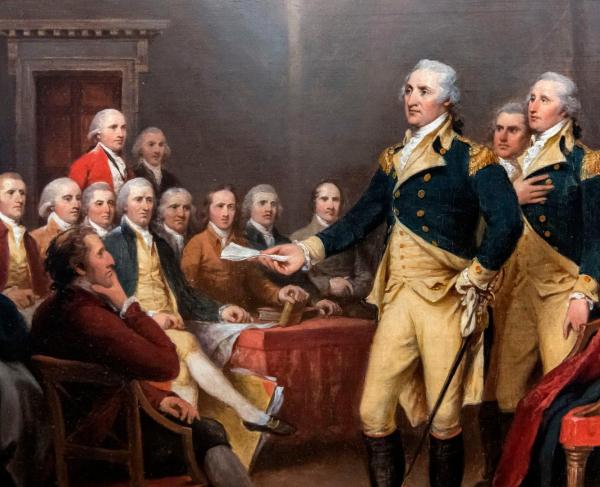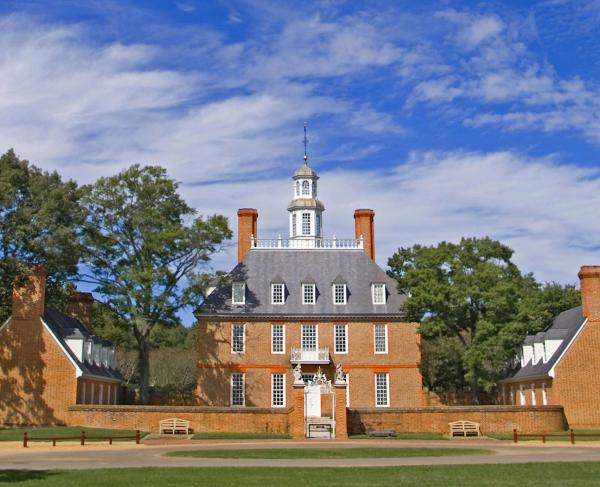
Old Exchange and Provost Dungeon in Charleston, South Carolina.
One of the most historic buildings in Charleston, the Old Exchange and Provost Dungeon, was finished in 1771. It played an important role and witnessed some of the most important events in Charleston during the Revolutionary War.
The Old Exchange was built to serve as the customs house for the port city. As such, it was the center of much of the city’s business. Inside the building was a basement, a main floor where business occurred, and a Great Hall on the second floor for special events. Charleston was a major port city in the slave trade, and auctions of slaves frequently occurred in the Exchange and just outside on the north side of the building.
In 1773, the Old Exchange was the scene of protests against British taxation on tea, and hundreds of chests of tea were stored in the basement. 1774, South Carolina representatives elected delegates to attend the First Continental Congress in the Exchange Building. It was also a location for reading important proclamations. The most famous of those was on August 5, 1776, when the Declaration of Independence was read to a crowd from the steps of the Old Exchange Building.
During the siege of Charleston in 1780, General William Moultrie moved thousands of pounds of gunpowder stored in the Powder Magazine to the basement of the Old Exchange and bricked it up to keep it safe. Following the Patriot’s defeat, the British army occupied the building. The basement was turned into a prison (or Provost Dungeon) for American Patriots, criminals, and British soldiers. While some American Patriots were held as prisoners in the Old Exchange Building, the vast majority of them ended up on prison ships in Charleston harbor. Approximately 800 Continental prisoners of war died of disease on the prison ships during the war.
Among the most famous prisoners in the Old Exchange were some political leaders captured in the Siege of Charleston, including three signers of the Declaration of Independence. Another famous prisoner in the building was the Patriot Isaac Hayne. Shortly after the fall of Charleston, Isaac Hayne, a South Carolina militia officer, voluntarily entered the British lines to get medicine for his family suffering from smallpox. While there, he was forced to sign an oath of allegiance to the British Crown or else be held as a prisoner. Hayne left the city as a prisoner on parole. By the summer of 1781, Hayne rejoined the Patriot militia as the British pulled back toward Charleston. In July, after a brief clash with some Loyalist militia, Hayne was captured and sent to Charleston, where he was imprisoned in the Old Exchange Building. The British, wanting to make an example of men breaking their paroles (and frustrated as the tide of war shifted), made the decision to have Hayne hanged for espionage. He was given no trial. The date of execution was moved back a few days so his children could visit him at the Old Exchange, and on August 4, 1781, Hayne was taken to a site just outside the city fortifications and hanged. The decision to execute Hayne outraged the Patriots and Congress. However, the public perception of this cruel act inspired many to join the Patriot side in the last few months of the war.
After the Americans liberated the city in 1782, the gunpowder was found behind the brick wall; the British never realized that the supplies were hidden beneath their feet throughout the occupation. After the Revolutionary War, the Old Exchange was the site of South Carolina’s ratification of the United States Constitution in 1788. 1791 President George Washington made his first and only visit to Charleston. He was welcomed into the city at the Old Exchange and was lavishly entertained on multiple days in the Great Hall.
Throughout most of the nineteenth century, the building served as a United States Post Office after a new Customs House was built further up on East Bay Street. It was in this capacity when it was taken over by South Carolina authorities during the American Civil War. It was damaged by Union cannon fire during the war but survived.
In 1913 the Old Exchange was transferred to the South Carolina Society of the Daughters of the American Revolution. They continue to own the building and lease the museum's operation to the city of Charleston. The museum highlights the city’s rich Revolutionary War history today.
Related Battles
5,506
258



